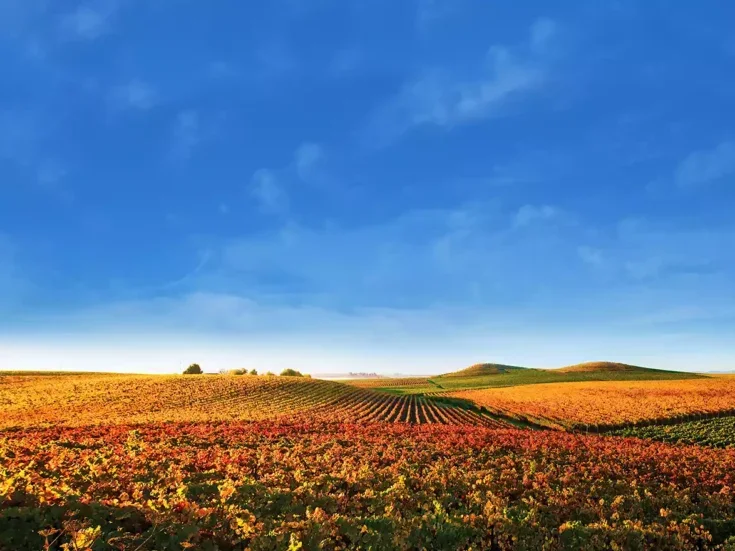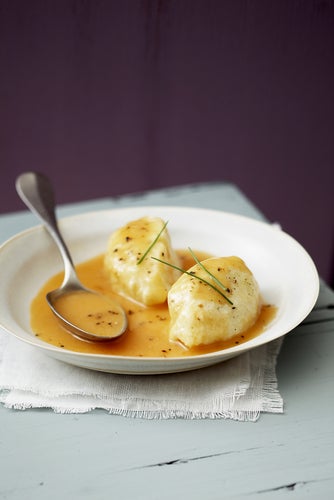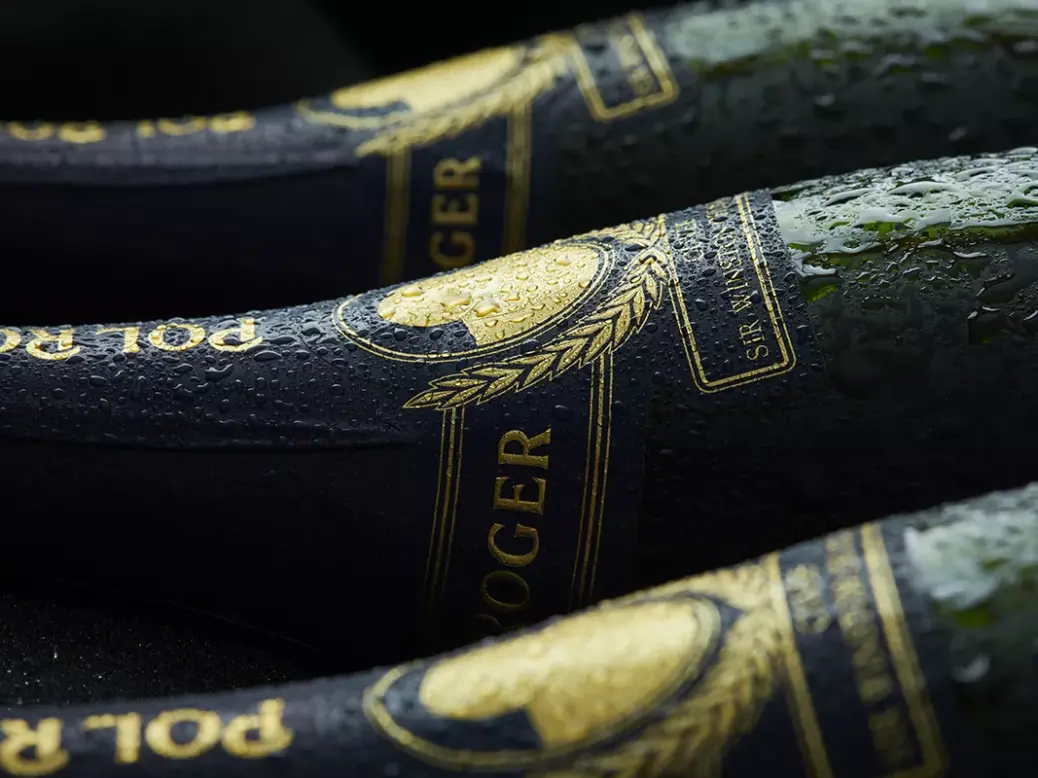
A house that is among the smallest of the traditional club of Grandes Marques, Pol Roger has long been a favorite of British establishment figures. But as an extensive retrospective showed, it remains acutely relevant.
The offices of Champagne Pol Roger are discreet, almost hidden in plain sight. Set back from the glitzy Avenue de Champagne in Epernay, the location is central yet tucked away—a metaphor, in a way, for the image of the house itself. Although this venerable family-owned house is well known, the character is somewhat confidential. It is among the smallest in volume of the houses of this stature, though British clients have long favored Pol Roger wines. The brand was, famously, the preferred Champagne of Sir Winston Churchill, who consumed large quantities of it, and it enjoyed the royal warrant of Queen Elizabeth II. Despite these somewhat dusty accolades, the brand remains acutely relevant. Not only was it served at the wedding of Prince Harry and Meghan Markle, but a recent tasting held in the US proved to this observer that the wines are better than ever.
Distinguished origins and patrons
The house was founded in 1849 in Aÿ, the native village of Pol Roger. He moved the company to Epernay in 1851 and directed it there until his death in 1899. He was succeeded by his sons Georges and Maurice, who legally changed their surname to Pol-Roger to honor their father. Maurice was the mayor of Epernay when the Kaiser marched in during World War I, and his heroics during the siege earned him the respect of his constituents. Maurice was followed in the family business by his son Jacques, whose beautiful wife Odette was said to have befriended Winston Churchill as he enjoyed the 1928 vintage at a British Embassy reception in Paris, solidifying Churchill’s loyalty to the brand.
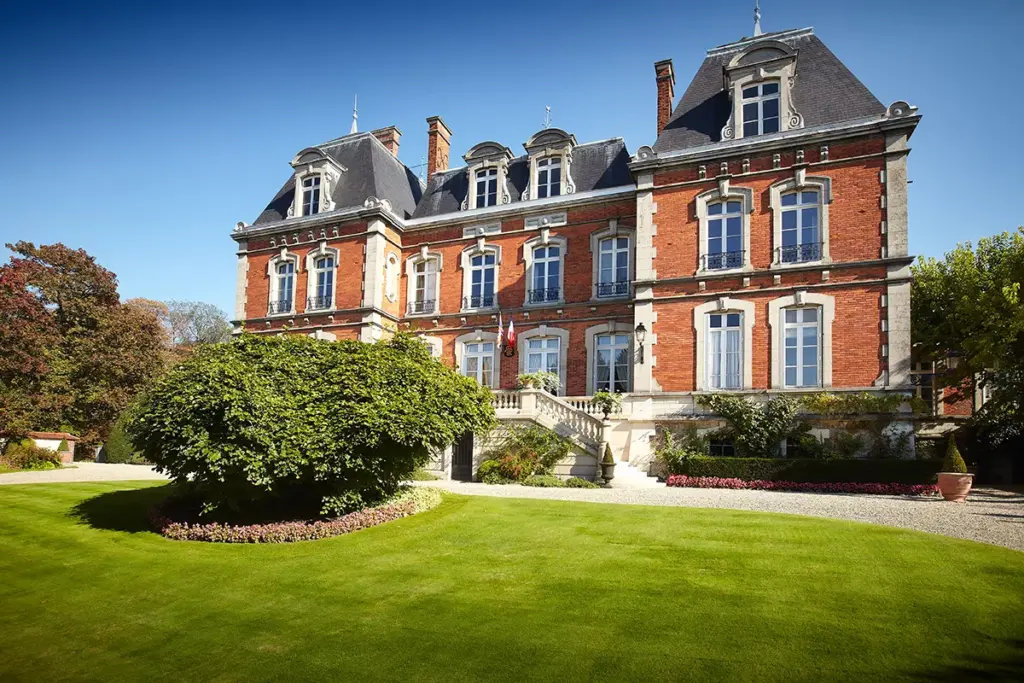
Maurice’s descendants, Christian de Billy and Christian Pol-Roger, continued to innovate: A Vintage rosé was introduced to the range in 1961, and a Vintage blanc de blancs shortly after that. The prestige cuvée was named in favor of Sir Winston Churchill, and the first vintage (1975) was launched in 1984. Today, the house owns 94ha (232 acres) of premier cru and grand cru vineyards. The base wines for their Champagne blends are all fermented in stainless-steel tanks at low temperatures, and the malolactic fermentation is routinely done. The Vintage Brut is produced from a 60/40 blend of Pinot Noir and Chardonnay from 20 different premier cru and grand cru sites and aged for seven to eight years before release. The Vintage Rosé is produced with a similar blend, with approximately 15 percent of the Pinot Noir as red wine, and is aged six to seven years before release. The crown jewel of the portfolio is the Cuvée Sir Winston Churchill.
According to James Simpson MW, managing director of Pol Roger in the UK, this blend averages 80 percent Pinot Noir, as it would have been during Churchill’s lifetime. With three Vintage wines and an impressive prestige cuvée as well, there is a wide choice at Pol Roger for the lover of Vintage Champagne. Here is a look at the range of vintages on offer during a recent retrospective.
Tasting Pol Roger
Brut Vintage Blanc de Blancs
Pol Roger Brut Vintage Blanc de Blancs 2006
2006 was a good year, producing a large quantity of grapes yet ripening the crop perfectly. The relatively modest acidity levels in 2006 mean the wine should mature more quickly than other good vintages, but the best wines are still youthful and should be cellared for at least another five years before opening. This wine is still in the first flush of youth, with a light lemon-yellow color, pronounced floral and ripe green-apple aromas, and just a hint of buttered toast. There is very little development here, and for now the wine tastes a bit simple. With time it should fill out, since the structure is where it should be: fresh acidity, creamy texture, and good length. Everything is in place for future development. | 92
Pol Roger Brut Vintage Blanc de Blancs 2002
2002 was a superb vintage—yields were moderate, and conditions were dry and warm, yet without drought or heatwave. Numerous bottles of ’02 consumed recently convince me that this vintage is nearing its early peak but should continue to improve for those who love mature Champagne. A delight. The 2002 Blanc de Blancs is opening now to reveal its full potential, with lush ripe apple and lemon-peel fruit aromas supported by a toasty yeast note. The texture is creamy and dense, and the persistence on the palate is among the wine’s most winning characteristics. The wine lacks the vinous quality so abundant in the regular Vintage but makes up for it with admirable finesse and elegance. This wine is drinking well now and will continue improving for years to come. | 94
Pol Roger Brut Vintage Blanc de Blancs 1999
1999 was a promising year spoiled by rain. Warm, dry weather throughout the growing season raised producers’ hopes, only to have them dashed by rains that began in early September and led to dilution and some danger of rot. Open now and showing all its charms, the 1999 Blanc de Blancs has lush nectarine and peach fruit aromas, with a well-integrated brioche note and a silky, approachable feel on the palate that is ravishing now. This vintage is eminently well balanced and pleasurable. Although this probably lacks the substance to continue to improve, it is equally unlikely to drop off quickly. | 91
Brut Vintage Rosé
Pol Roger Brut Vintage Rosé 1999
This has a deep salmon color, but there is an abundant mousse and a beautiful expression of red-fruit flavors, with a bouquet of raspberry, buttered toast, and floral notes. The wine is still remarkably youthful and shows fresh acidity, moderate body, and enough extract to linger invitingly on the finish. This blend of 65 percent Pinot Noir and 35 percent Chardonnay is aged six to seven years on the lees before release. | 92
Pol Roger Brut Vintage Rosé 1982
1982 was a superb year, with abundant sunshine and warm temperatures, allowing the vines to deliver both quantity and quality. The color is deep but not dark, with a hint of tawny beginning to take hold. The bouquet is poised between freshness and maturity, with ripe, almost baked plum notes shaded by truffle, earth, and brioche. The texture is supple and beginning to soften, with balanced acidity and a lush, luxurious feel, though there is still a rewardingly lively sparkle. This 65/35 Pinot Noir/Chardonnay blend had six years on the lees before disgorging. | 93
Pol Roger Brut Vintage Rosé 1964
Despite this disappointing bottle, 1964 is generally a superb vintage. Yields were reduced by a disruption of the flowering, which meant concentrated grapes. The summer continued hot and dry, and a bit of rain at harvest did nothing to diminish hopes. At nearly 60 years of age, however, the ’64s can be hit or miss. I have enjoyed a supremely good Dom Pérignon (original disgorgement), but I have been deceived by bottles of Comtes de Champagne and Dom Ruinart. The color of this bottle of the ’64 rosé is frankly tawny, and there is no mousse. The aromas are evolved, with truffle, caramel, and earth notes. There is a hint of volatility and a flat texture on the palate. Although it is interesting to taste as a testament to a legendary year in Champagne, this is a bottle that has gone a bit too far. 65/35 Pinot Noir/Chardonnay. | 79
Brut Vintage
Pol Roger Brut Vintage 2002
Twenty years on, the fantastic 2002 Vintage is still impossibly youthful, with a medium-deep lemon-yellow color and pronounced aromas of ripe apple, brioche, cream, and a hint of chalky minerality. The texture is still lively and fresh, with very little evolution. There is plenty of mousse, and a lively acidity balancing abundant extract leads to a lingering finish. This 60/40 blend of Pinot Noir and Chardonnay was aged eight years on the lees before release. | 94
Pol Roger Brut Vintage 1990
1990 is a legendary year among collectors. Yields were reduced somewhat by frost, and the growing season that followed was a year of brilliant sunshine (although the heat did not spike). The confluence of these factors led to some very ripe wines, which I have occasionally found heavy. The present Vintage bottling, however, shows that I would do well to relax and enjoy the bounty of 1990. The monumental 1990 vintage is still holding well, though it is beginning to show its age. The color shows signs of gold, and there is a hint of caramel to the ripe pear and apricot fruit aromas, abundantly shaded with the scent of toasted brioche. The texture is creamy and rich, with an edge that is almost fat, yet the wine still holds its balance in a very voluptuous way. This is mature wine but far from decline. | 95
Pol Roger Brut Vintage 1988
1988 is sometimes seen as the weakest of the 88-89-90 trio. It was cooler than the other two in that group, with a lower yield. The wines have higher acidity and less richness, but since I sometimes prefer finesse and elegance over power, I have always enjoyed the 1988s. Superb tension and concentration are evident from the outset of this lovely wine, which features ripe but still remarkably fresh and youthful notes of nectarine, lime peel, and pear, while the toasty brioche aromas marry well with hints of truffle. The texture is still vibrant, with fresh acidity balancing an impression of plentiful extract that draws this inexorably to a lingering finish. This wine still has plenty of time left—many of the ’88s are still on the way up. 60 percent Pinot Noir, 40 percent Chardonnay. | 96
Pol Roger Brut Vintage 1975
1975 was a startling success. It was a cold year with low yields due to poor flowering late in the year. After this period, though, conditions were hot and dry. Although the harvest was late, the results were good, provided growers sorted effectively after the rains began in October. There is still a gratifyingly lively mousse here, even though the wine is closing in on 50 years of age. The color is golden now, but the bouquet is holding together well, with notes of walnut, brioche, and butterscotch coloring the tarte tatin fruit aromas. The texture is a bit lighter and not as concentrated as the ’88, yet there is a very elegant finesse that manages to carry the day with aplomb. While this is mature and probably will not continue to improve, it should hold at this level for some time to come. | 93
Pol Roger Brut Vintage 1959
1959 was characterized by poor flowering that lowered yields, followed by mild and warm conditions that ripened the grapes to perfection. The best of the wines combine high ripeness and low acidity. If this combination means that some wines have not stood the test of time, the best can be thrilling. A lovely experience. This ’59 has a deep golden hue, almost tawny, and no apparent mousse remains. The aromas, however, show spectacular depth and concentration—it is still a pleasure to drink, and one appreciates it as one would a still wine. There are aromas of caramel, walnut, honey, truffle, and earth. The texture on the palate is ample, and the finish is still long. Although it is in the twilight of its evolution, there is still plenty of enjoyment here, but it seems the time has come to drink up. | 89
Pol Roger Brut Vintage 1949
1949 is considered one of the great Champagne vintages. The yield was low due to hail and poor conditions at flowering, but the growing season was hot and dry, helping what fruit was left to ripen exceptionally well. At this advanced age, however, caution is warranted. Look for a solid fill level and good color before investing in one of these wines—though happy surprises still occur. The 1949 seemed paradoxically fresher than the 1959. Both products of hot vintages, this ’49 has retained a more youthful hue and bouquet. There are plenty of ripe, toasty aromas and hints of hazelnut and praline, but the earthy truffle aromas are not here, and the overall impression is one of less development (but also less concentration). As with the 1959, there is no mousse left here, but the wine exhibits more vitality and length. | 92
Pol Roger Brut Vintage 1934
1934 is often cited as the best year of the 1930s, the vines producing both quality and quantity. My experience has been that the wines are uniformly very mature at this point, and to find them in good condition is relatively rare. This bottle of 1934 Pol Roger was more of a museum piece than a wine for current consumption. The color was brown and lacked clarity. The wine had pungent aromas of truffle, earth, and soy carried aloft with the help of ample volatile acidity. This bottle was a disappointment for a vintage of such repute. | 79
Brut Vintage Cuvée Sir Winston Churchill
Pol Roger Brut Vintage Cuvée Sir Winston Churchill 2012
2012 has been called the best vintage of the decade. It did not start out that way—there was a freezing winter, frost, and rain. From July until the harvest, however, the conditions were perfect. The ’12s are substantial wines with abundant acidity that should age exceptionally well. Collectors with patience should wait at least another decade before opening the best wines. This wine is stunning, albeit far too young to drink. The aromas are achingly primary, with notes of fresh grapefruit and lemon peel, green apple, and pear, with acacia flower and a suggestion of clover honey—but there is little yeasty character and no development. The texture is tightly wound and exhibits marvelous density and length. There is immense potential here. | 95
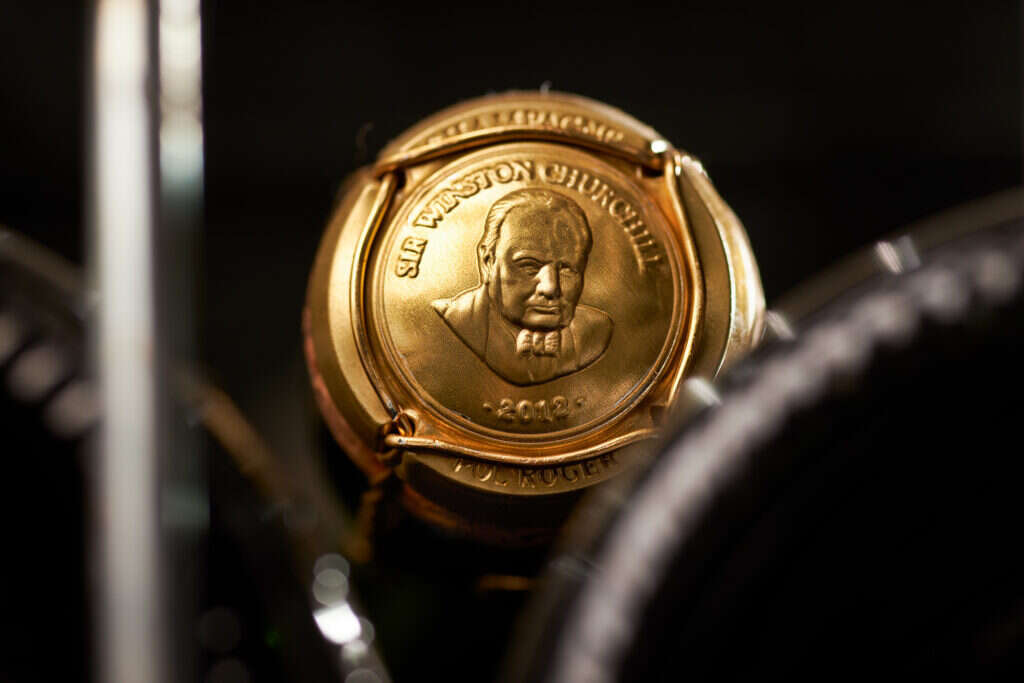
Pol Roger Brut Vintage Cuvée Sir Winston Churchill 1996
Some see 1996 as the vintage of the century in Champagne, while others see it as a year of great potential that never lived up to its billing. It was a year that managed both excellent ripeness and great acidity. Each wine lover must decide this type of debate for themselves, but if this bottle of Winston Churchill is any indication, the ayes may carry the day. This wine is approaching a first plateau of deliciousness. It was for many years somewhat inscrutably closed and lacking generosity, but now well-cellared bottles are beginning to unspool their once-hidden treasures. The youthful ripe-apple aromas, hints of bread dough and hazelnut, and a creamy, buttery texture are all now beginning to show their potential. To judge from the overall youthful nature of the aromas and the freshness of the lively acidity, this still has many years of improvement ahead of it—this is a wine that will last a half-century at least. | 96
Pol Roger Brut Vintage Cuvée Sir Winston Churchill 1988
Although I once preferred the ’88 to the ’96 Winston Churchill, it seems that the tide is now beginning to turn. Although the former retains impressive freshness and has lost nothing of its vigorous mousse, the gradually deepening color, and notes of caramel, toast, and smoke suggest that this wine is entering a more mature phase. While the fruit has a lovely golden character, the texture is silky more than vibrant. This wine should please fans of mature Champagne, but it portends an eventual decline another five to ten years from now. | 94
Pol Roger Brut Vintage Cuvée Sir Winston Churchill 1985
1985 was a superb year, with a tiny yield due to frost. Conditions delivered wines of intense concentration and longevity to make this one of the truly great years. It is now drinking perhaps at its peak, but the best wines will continue to age and improve. Powerful and concentrated, the 1985 Winston Churchill is vibrantly thrilling. The color is a warm golden yellow, and this bottle had a surprising vigor to the mousse. The aromas of quince paste, toasted walnut, and clover honey tell me the evolution is in a perfect spot—it has begun to mature without yet tipping over into caramel, truffle, or earth. It is both more substantial and paradoxically more youthful than the 1988 vintage. The texture is rich and opulent yet balanced by enough freshness to carry this to a truly impressive finish. For me, this superb wine was the high point of the tasting. | 97
Pol Roger Brut Vintage Cuvée Sir Winston Churchill 1979
1979 is a landmark year in Champagne. The harvest was late because of a cold spring—it didn’t begin until October—but the summer was hot and dry, and in the end, the vines gave us grapes with good levels of both ripeness and acidity (though not as freakishly high as 1996). These wines are mature now, but the best can still be lovely. The once-majestic 1979 Winston Churchill seems, on the evidence of this bottle, to be losing its edge. The color is deepening to tawny. There is still mousse, but it is fainter and less insistent than the last outing. The fruit shows less sweet orchard-fruit character than past bottles and more of what I called “toasted walnuts and endive” in my note. The texture is also waning, yet the wine still provides pleasure. Collectors sitting on bottles of the ’79 will doubtless still enjoy them, but they would be well served to open them soon. | 92

